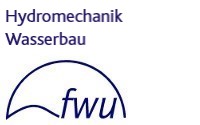ALADYN-Workshop 2018 - Main outcome

From Wednesday 17th to Friday 19th October 2018, the Research Institute for Water and Environment (fwu) of Siegen University together with the Helmholtz Institute of Coastal Research (HZG), and the Coastal Research Station Norderney (NLWKN) hosted the
1st ALADYN Workshop on the development of tidal dynamics and its role for coastal protection within the North Sea
at the Federal Maritime and Hydrographic Agency (BSH) in Hamburg, Germany. The overall aim of the workshop was to bring together and promote interchange between a diverse community of researchers, students, practitioners, and stakeholders concerned with this complex topic.
Over three days, we had plenty of interesting talks on observed and potential future changes in tidal dynamics including our brilliant keynote speakers (Ivan D. Haigh, Mattias Green, Philip L. Woodworth, David Jay, and Deborah Idier).
The main outcomes of a final discussion can be summarized as follows:
Main outcome of the ALADYN workshop
There is considerable evidence that tides have changed and are continuing to change due to non-astronomical factors over the last ~200 years. Knowledge of past changes in tides is mostly based on tide gauge measurements which are affected by both local (e.g. dredging, or coastline changes etc.) and/or larger-scale (e.g. sea level rise) mechanisms hampering the detection of patterns or drivers.
Another issue are limitations in the accessibility of historical records spanning several decades to centuries. There have been efforts to provide a global and freely available database of tide gauge records (see Woodworth et al., 2017) but still many regions are not or only poorly represented, often as a result of state specific restrictions on the usage and transfer of national tide gauge data. But also the temporal availability is often restricted, severely limiting the explanatory power of tide gauge analyses. At the same time, quite a few long records are available as hard copy at local authorities and much digitising efforts have already been initiated. However, still many tide gauge observations have not yet been handled and thus more data recovery (archaeology) campaigns are needed.
It is vital to continue investing in tide gauge networks and data archaeology. In particular, more gauges are needed in open-ocean environments (away from shallow coastal areas where most historical tide gauges are located). This may further help to separate locally confined coastal effects from large-scale changes in tidal characteristics.
Also the different pre-processing approaches used for the assessment of changes in tides differ between studies, thus exacerbating both the reproducibility and comparability of their results. Consequently, It is still difficult to robustly associate observed changes in tides with particular forcing factors just from existing studies alone.
A number of modelling studies exist enabling to investigate potential future changes in tides. These studies indicate that regionally-coherent increases/decreases in the tide are likely to occur over the next centuries potentially driven by sea-level rise, ocean circulation changes, changes in coastal morphology, and variations in sea-ice extents. However, robustly predicting the size or even the sign of such changes at individual coastline stretches into the future is still challenging, as available studies are often still model- or set-up-dependent and focus on individual regions. Other inconsistencies are potentially introduced from differences in
- boundary conditions;
- configuration settings;
- horizontal resolutions;
- MSL rise scenarios;
- coastline representation;
This is why we would like to stimulate the use of standardised test cases based on a specified state-of-the-art modelling scheme. We furthermore recommend establishing an international inter-comparison project such as the Coordinated Ocean Wave Climate Project (COWCLIP) (Hemer et al., 2013).
Again, we would like to thank all participants for their excellent contributions!
All available presentations can be downloaded under the following link:



